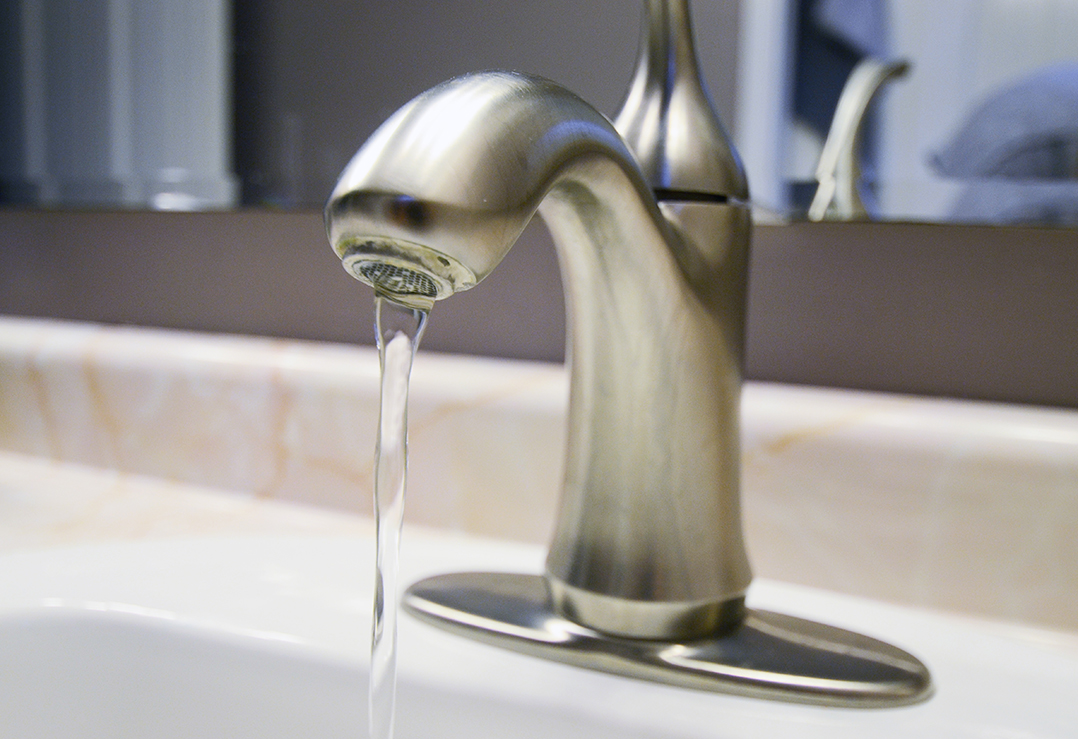
By Sara Baldwin
A recent report from The Environmental Working Group shows a rise in certain pollutants in Carmel’s water supply, but the city’s drinking water continues to meet EPA standards.
The EWG is a nonprofit, non-partisan organization that compiles a “Tap Water Database.” It allows citizens to pull individual water pollutant data by ZIP code. Some of the EWG’s data, fact-checked against Water Quality Reports from Carmel Utilities, shows a rise in certain pollutants such as arsenic, antimony and chloroform, among others.
“The EWG report bases its information on the California Office of Environmental Health Hazard Assessment, not the EPA, when it states that Carmel Utilities had seven contaminants detected above the health guidelines,” said John Duffy, utilities director at Carmel Utilities. “Each state has the option to be more stringent than the EPA regulations, but no less. For each of the seven contaminants, Indiana’s state primacy for the EPA, IDEM, has recognized the EPA regulations and is not more stringent. For each of the seven contaminants, Carmel Water was below the levels enforced by the EPA.”
According to EWG, Carmel’s antimony levels have risen from “non-detectable” in 2013 to 0.34 parts per billion in 2014 and to 2.3 ppb in 2015. Experts, however, don’t agree on the standards for determining the impact of these chemicals.
The EWG, using “public health goals” established by California’s OEHHA, which are more stringent than the EPA requirements, determined that the safe amount of antimony in drinking water is 1 ppb. However, the standard supplied by the federal Safe Drinking Water Act is 6 ppb. The effects of antimony at those levels are unclear, but the World Health Organization reports that antimony ingested in larger amounts can trigger abdominal issues and cardiac toxicity.
Dr. Indra Frank, environmental health and water policy director for the Hoosier Environmental Council, said the estimated risks from those types of pollutants are very low. With carcinogens like arsenic, however, she said there is no way to achieve zero risk unless it is completely eliminated from drinking water. Because arsenic exists in the ground, it cannot be totally eliminated. Regardless, the estimated risk from arsenic levels in drinking water at 10 ppb is that 1 in 10,000 people would contract a form of cancer that they would not have otherwise. Carmel’s arsenic levels are far below that.
“Relative to a lot of places in the world, this is really safe drinking water,” Frank said. “We are in the fortunate position of trying to reduce risks that are already tiny.”
How does this data affect the lives of Carmel residents?
Jill Hoffmann, the executive director of the White River Alliance, said the risk for contaminants tends to be lowered in groundwater communities like Carmel, compared to Indianapolis which gets much of its supply from surface water. She also said utility companies provide water at levels that meet EPA standards, but there are a number of “emerging contaminants” that don’t have set standards, such as pharmaceuticals and beauty products.
“Those are the silent sources of pollution that you don’t see until it’s too late,” Hoffman said. “We are trying to get people to realize their role in their own public health. Everything that’s in our landscape and everything that’s in our lives ends up in our water.”
Some residents believe the water in Carmel has changed in recent years.
Carmel resident Deb Summitt said when she built her home in Carmel 18 years ago, the water quality was so good her family did not need a water softener.
“We have not had any problems until the last three to five years.” Summitt said. “Something has changed. I have noticed a gradual increase in mineral deposits. Two different people (at Carmel Utilities) told me this was due to the increase in residents in Carmel.”
Duffy said the growing population shouldn’t affect the hardness of Carmel’s water.
“There is no question that Carmel has grown, but (the water) has not changed in terms of hardness,” he said. “The summertime average is 22 million users, but we have the capability to serve up to 34 million users. It is not a capacity issue.”
He also said Carmel is not required to soften water but that it does, anyway. Water coming into the treatment plant is at 18 to 25 grains hardness, he said, and the city softens it to 8 to 10 grains. During periods of high demand in the summer, the water might not be softened quite as much.
Kristin Stout grew up in Carmel and has been a homeowner for 2 1/2 years. For many years, she said, the water seemed fine.
“We moved away in 2011, and when we moved back to Carmel in 2015, I noticed a big difference in the water quality,” Stout said. “All of our faucets and appliances are brand new, but we are already seeing issues. I don’t know what has changed, but (the water) is not living up to the standard that (Carmel) promotes.”
Learn more about Carmel’s water quality at carmelutilities.com/Carmel-Utilities-Water-Quality_8.html.
LEARN MORE
Sue Maki, manager of environment initiatives and education for the City of Carmel, will give a presentation from 7 to 8 p.m. Oct. 25 at the Carmel Clay Public Library. She will discuss Carmel’s water source – an aquifer – and the filtration process it goes through as well as the water carbon footprint.
For more, visit carmel.lib.in.us/attend/calendar.cfm.



